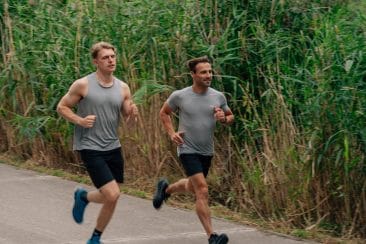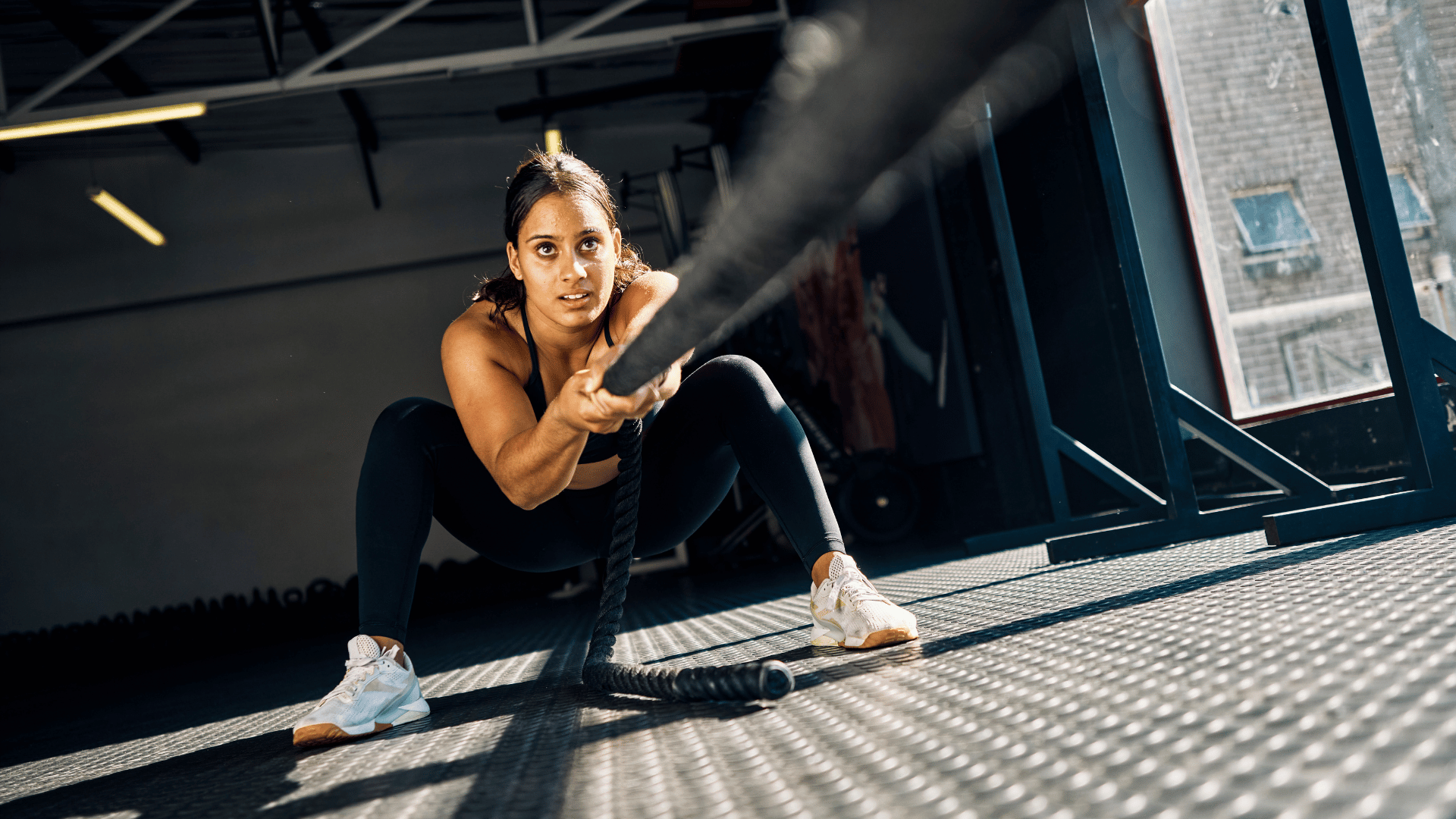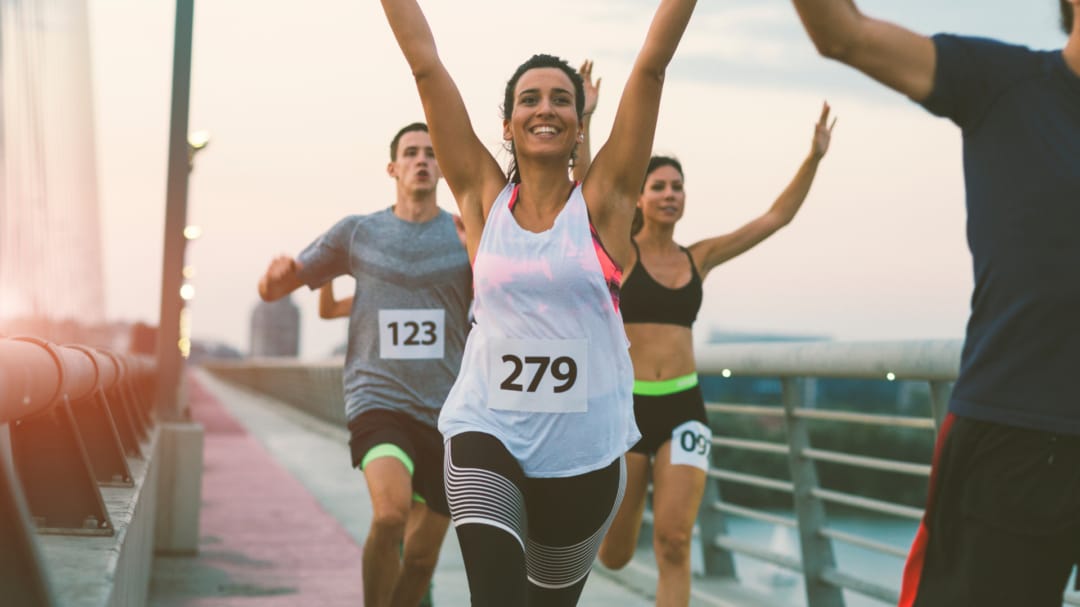Recovery Tips & Planning for London Marathon 2024 Runners

Claire Small
Chief Clinical Officer & Consultant Physiotherapist
- 11 April, 2024
- Running
- 3 min read
Recovery Tips & Planning for London Marathon 2024 Runners

Running 26.2 miles puts a lot of demand on the body and runners may experience depleted fuel stores, accumulated fluid in the muscles, dehydration, damaged muscle tissue and increased inflammation.
These factors often result in fatigue, stiffness, and soreness. For marathon runners, having a recovery plan to navigate these kinds of challenges, and then keep running afterwards, is vital.
“It is important to reframe the way we think about recovery,” explains Head of Rehab and Running expert, Dawn Nunes. “It is an essential part of our training for optimal strength and progression rather than something that we do only if we have time.”
How to Recover After Running a Marathon
There’s no magic formula for calculating how long a marathon runner will take to recover – everybody’s recovery time will be different because it’s an individual process. Pure Sports Medicine recommends a recovery plan made of just three easy steps:
- Sleep is the body’s natural way of healing. We recommend runners take a nap after the race, on top of their regular eight hours sleep at night.
- Re-fuelling
helps to replenish nutrients and liquids lost during training or the race, so post-race carbohydrates and rehydration fluids are a must. - Soft Tissue Therapy works to reduce soreness and aches while increasing circulation, allowing the body’s ability to flush out ‘waste products’ built up in the muscles after exercise which can lead to aches and stiffness if left untreated. It also reduces inflammation by improving circulation and lymphatic drainage. Soft tissue therapy can also help to reduce stress and increase mood by stimulating the body’s feel-good hormones, endorphins, as well as stimulating the parasympathetic nervous system, promoting relaxation. It can also reduce pain.
Advanced Physiotherapy Practitioner, Rebecca Christenson, explains: “I find many patients struggle to keep their protein intake at good levels. We want people to have between 1-1.5g per kg of bodyweight per day. I usually recommend they speak to Dr Linia Patel or Clem Cleave, our Nutrition team, for more specific guidance on this.”
Managing Injuries
After a long race your legs may feel heavy and stiff, or even painful. Recovery doesn’t mean doing nothing, but rather exercising lightly to get the muscles activated and the blood flowing. A gentle walk the day after and in the week following the marathon will quickly help alleviate any stiffness.
However, if there is a particular pain lingering, then an assessment may be needed to make sure that you have not injured yourself before bouncing back into training.
For runners who continue to feel niggles or pain over the coming hours and days after a marathon, it’s important to see a physiotherapist to determine if there is an injury at play here so they can prescribe a course of rehab treatment. Runners shouldn’t wait until pain is constant, they should listen to their body and see a medical professional to prevent any further pain or injury.
Physiotherapist, John Daly advises that ‘if running is too painful, a form of cross training like cycling or swimming will allow you to continue to work on your cardiovascular fitness while offloading discomfort in your lower limb.”
When to get a Soft Tissue Massage
There is an optimal time to do this, and runners can structure it around their training programme. In fact, the pros will always have a soft tissue massage element added to their training plans because it is so useful for preparation and recovery. Pure Sports Medicine generally advise the below:
- 1 – 3 days post marathon — a light flushing massage
- 3 – 5 days post marathon — deep tissue massage
At Home Support
- Runners can try using massage aids or devices such as a foam roller, a massage ball, or a Theragun/massage gun.
- Taking 20-minute cold/hot baths after the marathon and long training runs
- Getting regular and qualitative sleep (6-8 hours a night)
- Stretching: quads, calves, glutes, and hamstrings — dynamic stretching pre-training and static stretching post training
- Incorporating a structured nutrition plan to support recovery.
However, Soft tissue therapist, Bozena Kedziora notes that although foam rolling can support with recovery, it will be crucial to adopt the right technique to avoid making common mistakes for a more effective and safe self-massage experience. This can include the following:
- Avoid massaging painful spots directly: initially target spots indirectly. If a spot is sensitive, ease away from it by a few inches and work on a more localised region, before using larger, sweeping motions
- Rolling too fast: slow and concentrated movements are key. Rolling too quickly won’t allow muscles to adapt to compression and adhesions won’t be eliminated
- Spending too much time on knots: It’s ok to work on knots but avoid spending too long on the same spot. Five or ten minutes could cause damage to tissue or nerves especially if you’re after an exhausted event like a marathon.
For more information on running and recovering from running a Marathon, visit our Running Advice page or keep scrolling.

Advice
Over the last 20+ years our experts have helped more than 100,000 patients, but we don’t stop there. We also like to share our knowledge and insight to help people lead healthier lives, and here you will find our extensive library of advice on a variety of topics to help you do the same.
OUR ADVICE HUBS See all Advice Hubs

